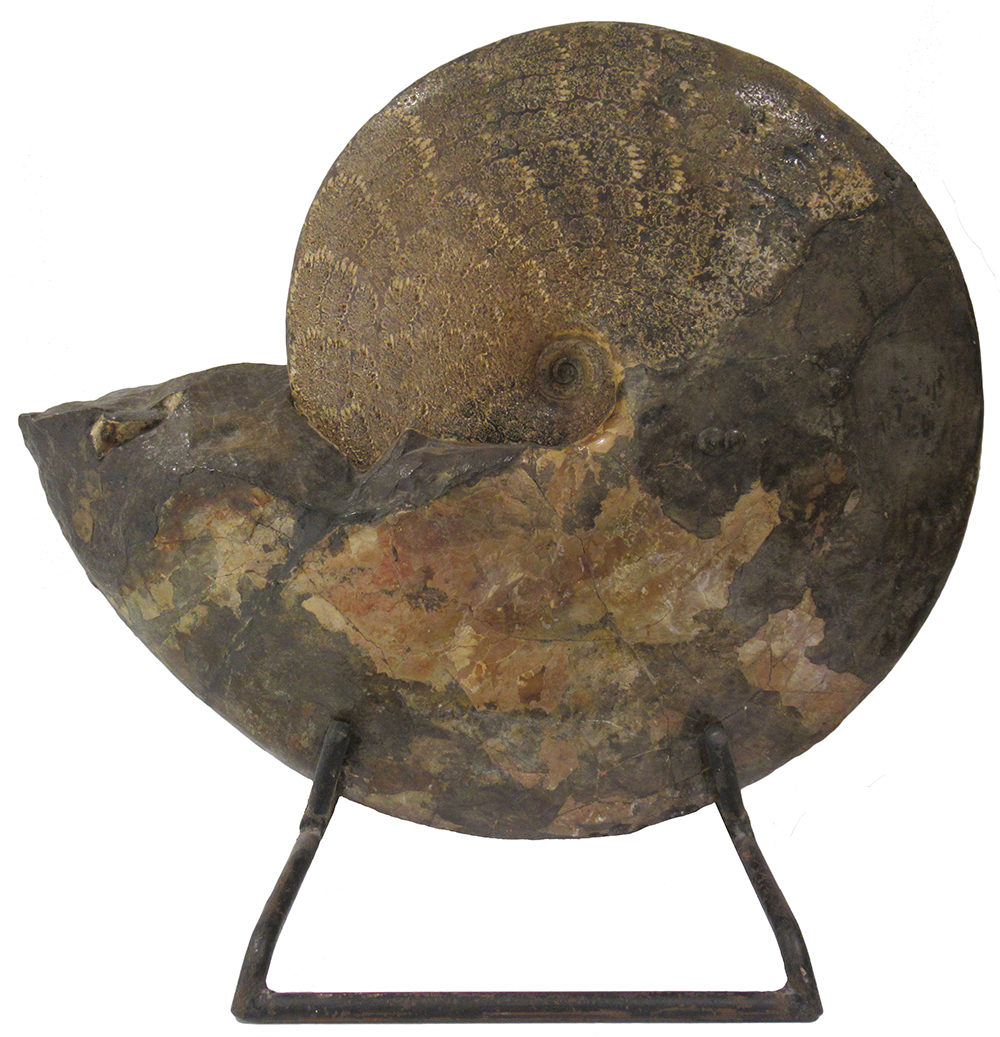Cretaceous (~145-66 MYA) - cephalopod mollusc

Ammonoids were a group of extinct marine cephalopod molluscs that were common in Mesozoic seas. You can imagine them as being like a squid or octopus with a shell, as squids and octopi are cephalopods whose ancestors lost their shells. The name ‘ammonite’ comes from the spiral shape of their shells which resemble tightly coiled ram horns, like those that adorned the Egyptian god Ammon. The thin, flattened, streamlined shape of this ammonite suggests it was a fast-swimming form that relied on speed to catch its prey and avoid even larger predators – many of which lived in Mesozoic oceans. Hence ammonites were not apex predators but intermediate parts of their marine food web. Ink sacs, like those of modern octopus and cuttlefish, also helped ammonites to evade capture.
Ammonite shells consisted of many chambers, with the ammonite’s soft body only occupying the largest outermost chamber of the shell coil. As the ammonite grew, it would secrete a new edge to its shell, shift forward, and seal off earlier shell segments with thin walls, called septum. A narrow tube-like structure connected the interior chambers so the ammonite could withdraw water from the chambers to adjust its buoyancy allowing the animal to grow larger. Because the smaller segments were then passively gas-filled, they would have floated above the living chamber to make horizontal swimming easier. Hence, in life the ammonite had a pose similar to this mount.
The intricate pattern along the fossil’s upper surface reflects the complex shape of the septum dividing each chamber. The small convolutions of the septum increased the walls’ strength allowing the shell to withstand higher water pressures. The complexity of this species’ suture pattern suggests a form capable of living at considerable water depth. However, in life you would not see this suture pattern. Instead, the outer surface of the shell was a smooth wall, with an underlying layer of shiny nacre (also called mother of pearl). Some shiny nacre is preserved on the lower half of this specimen. However, the outer shell and nacre have been worn away from much of the specimen’s surface and along the top part of the fossil, all the outer shell was worn away to reveal the complex suture pattern of the interior chambers’ walls. While many ammonites had shells ornamented by spiral ridges, ribs, or spines, others were smooth and featureless like this one, another indication of a fast-swimming lifestyle.
Ammonites were sexually dimorphic, with the shells of one sex being larger than those of the other. In modern Nautilus, a distant relative of ammonites, the female is larger, and this is assumed to be true of fossil ammonites as well. Females were more likely to have been larger because they needed more body size for egg production. However, ammonite sexual dimorphism was only recently recognized, so in the past females and males of the same species were often mistakenly assigned different species names.
After being a dominant form of marine life for over 340 million years, the last ammonite lines vanished in a geologic instant as a large meteorite struck the Earth to cause the Cretaceous-Paleogene mass extinction. This was the same event that ended the non-avian dinosaurs’ domination of land ecosystems and swept away the last Tyrannosaurus rex.